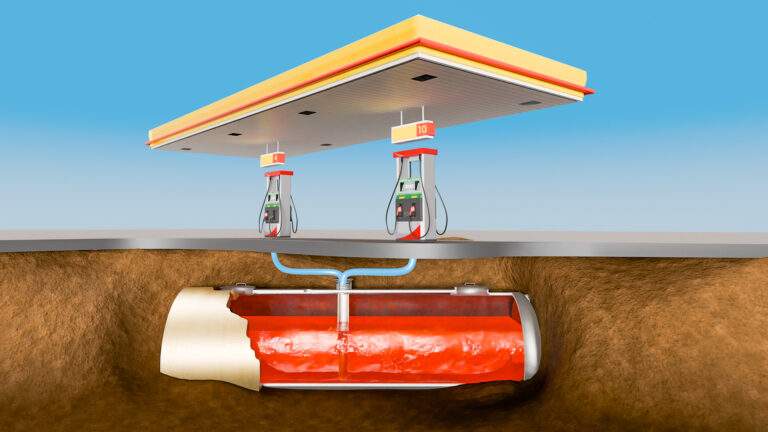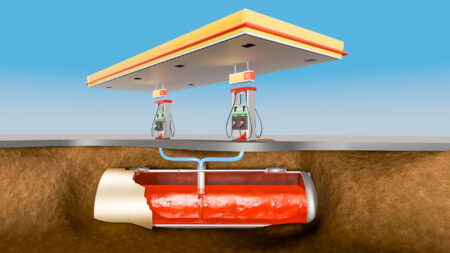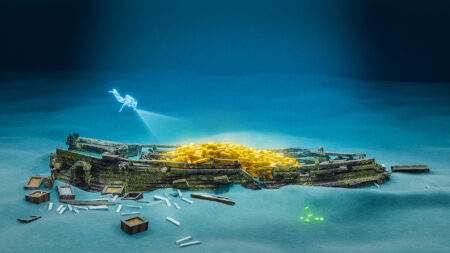In 1977, the Voyager 1 space probe was launched to study the outer solar system. The two Voyager space probes have become the longest operating spacecrafts in spaceflight history. 45 years later, Voyager 1 is now 24 Billion kilometres from Earth and travelling at 61,000km/h. That’s 15 Billion miles and 38,000 mph. Voyager 2 is around 20 Billion kilometers (12 Billion miles) from Earth and traveling at 55,000km/h (34,000 mph)
Despite Voyager 1 being the furthest man made object from Earth, we are still able to communicate with the space probe on a regular basis. Most of its instruments no longer function, but the space probe is still able to send us back information about what it’s sensing outisde of our solar system. But how far can it go before we can no longer communicate with it?
Voyager 1’s signal
To answer this, we need to know how Voyager 1 receives and transmits data from 15 Billion miles away. Communicating with space is a tricky challenge to begin with, but communicating with something so small and so far away takes everything to the next level. A 20 KiloWatt signal is transmitted from Earth to Voyager 1 using radio waves. Since radiowaves travel at the speed of light, it takes almost 20 hours for the signal to reach the space probe where it’s sensitive antenna picks up the signal. This antenna was a 3.7-meter (12 ft) diameter dish that could capture very faint signals.

For comparison, it takes the rovers on Mars an average of just 15 minutes to send messages back to Earth, so 20 hours is enormous. Because of this, it takes a total of 40 hours for us to know if Voyager recieved and processed each command we said to it, by the time the signal reaches Voyager and returns to Earth. Once Voyager is ready to send a signal back to Earth, it points it’s transmitter precisely in our direction.
Voyager sends its data back to Earth using a 20 Watt signal, however, once it reaches Earth, the signal is much weaker due to free-space path loss. This causes signals to spread our in space making them weaker and weaker as they travel further through space.
Communicating with Earth
In order to communicate with objects that are this far away, it doesn’t really matter how strong the signal is, as long as you have a receiver that is sensitive enough to pick it up. NASA could have creating a much more powerful transmitter and put it on the Voyager space probe, but that would add on an enormous amount of weight. And so NASA needed a way to detect super weak signals.
NASA uses the Deep Space Network which consists of three Antenna complexes equally spaced around the Earth in Madrid (Spain), Canberra (Australia) and California (USA).
Each complex has a huge 70 metre antenna along with multiple 34 metre antennae which can be combined to pick up signals that are thousands of times weaker than your standard FM radio signal.
The Deep Space network spends several hours each day listening for faint signals from Voyager 1, and so far, it continues to talk back to us.

Since our methods for detecting signals has improved drastically over the past 50 years, there isn’t really a limit on how far we can communicate with objects in Space. We could in theory communicate with objects much further than the Voyager probes, as long as we can recieve the faint signals and decipher them from the surrounding noise.
With our current technology, we could reliably communicate with objects that are many light years away from us, as long as our receivers are sensitive and accurate enough to pick up the extremely weak signals. Although we haven’t sent anything nearly that far into space, this ability could one day become super useful if another civilization decides to send their message out into the Universe.
As Voyager travels further and further away from Earth it takes longer to send and receive signals. This makes it harder and harder to control and monitor the space probe. The signal strength also gets weaker and data rates become slower making it harder and harder to communicate with the spacecraft. Right now, the Voyager space probes only send a very small amount of data back to Earth.
Voyager 1 will continue on it’s journey indefinitely, and although there is technically no limit to how far we can communicate, our communication with Voyager 1 only has a few years left.
Voyager 1’s power source
Since Voyager 1 is Nuclear powered, it’s electrical power weakens each day. Despite running since the 70’s, these Nuclear RTG’s eventually run out of power. Not only that, their power output constantly decreases over time, and the current output is much lower than it was at its peak when it launched in the 70’s. Because of this, NASA had to turn off most of Voyager’s instruments over time to conserve power and make the space probe last for as long as possible.
In 1990, in order to save power, engineers turned off the spacecraft’s camera after Voyager took the famous “Pale Blue Dot” image, which showed Earth as a tiny blue pixel against the darkness of space. This incredible image puts into perspective how far away these space probes are from Earth, and this was over 30 years ago. The fact that a tiny signal from Voyager’s transmitter can be picked up by that tiny blue dot is incredible.

Today, only 4 out of the 11 scientific instruments on Voyager 1 are still active. These instruments are being used to collect data on magnetic fields, solar winds and cosmic rays outside of our solar system. If everything goes well, we should still be able to communicate with Voyager, as long as we can decipher its signal. In around 8 years, Voyager 1 will completely run out of power and will no longer be able to keep it’s instruments going. At that point, Voyager will be completely on its own, on a trajectory that we will almost certainly never cross every again.
Scientists will continue to communicate with the space probe and receive the important information it gathers until it eventually sends its last bit of data and disappears silently into space, never to be heard from ever again.
So although the end is near for the Voyager space probes, we can appreciate the incredible journey they have been on and the valuable science they have taught us.













Your point of view caught my eye and was very interesting. Thanks. I have a question for you.
Thank you for your sharing. I am worried that I lack creative ideas. It is your article that makes me full of hope. Thank you. But, I have a question, can you help me?